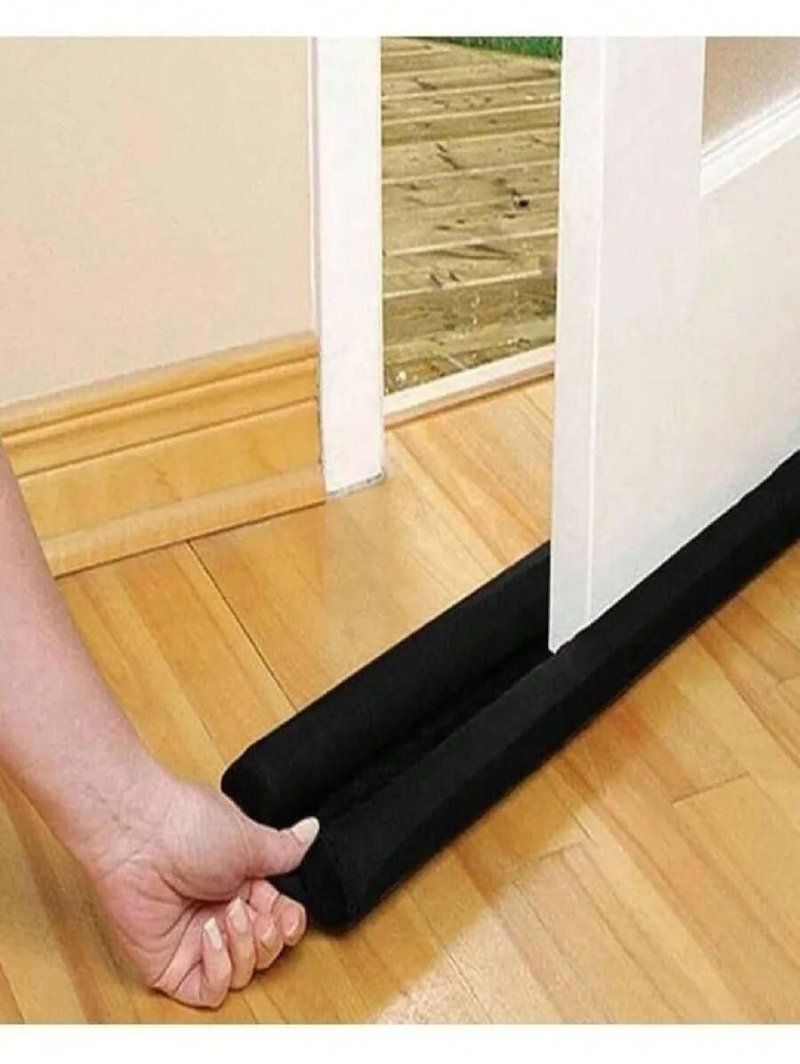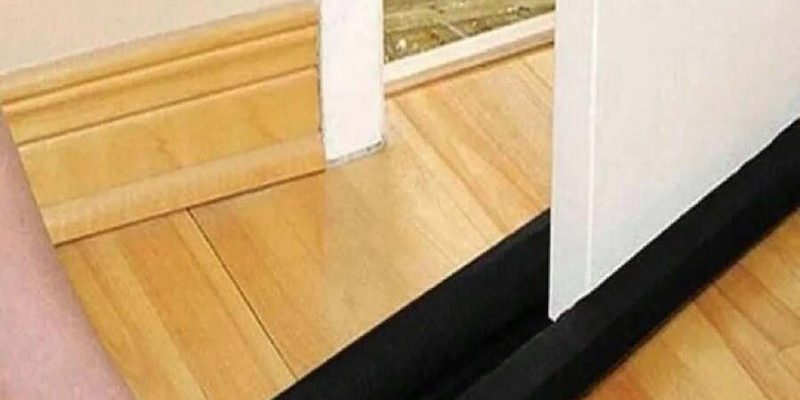
Think of your door seal like a goalie at a hockey game—supposed to block anything from slipping past. When it’s doing its job, drafts, dust, and creepy crawlies stay outside. But once it starts to sag, crack, or shift a bit out of place, you’ve got a wide-open net. Whether your entryway uses a basic vinyl sweep or a fancier magnetic strip, no brand is immune: even popular brands like M-D Building Products or Frost King can let bugs in if the seal’s not perfect.
So, how do you figure out what’s wrong—and more importantly, how can you fix it without calling in the pros or shelling out for a whole new door? Here’s the thing: most door seal issues just need a bit of detective work and some simple DIY tools.
How Door Seals Are Supposed to Keep Insects Out
Before troubleshooting your door seal, it helps to know what you’re working with. A door seal (sometimes called a weatherstrip or sweep) is a strip of material, often rubber or foam, that runs along the edge or bottom of your door. Its whole job is to fill that tiny gap between the door and the frame or floor.
When properly installed, a *good door seal* forms a snug, even barrier that blocks out not just insects, but also drafts, dust, and water. The problem is, even a gap as thin as a credit card is an open door for bugs—especially ants, spiders, and tiny beetles.
You might be wondering: *Do all doors have the same kind of seals?* Not quite. Some have a sweep you attach to the bottom; others use adhesive foam strips around the sides and top. High-end doors might use magnetic seals or a combination of types. But the goal’s always the same: keeping outside stuff, well, outside.
Honestly, if you’re getting more insects lately, there’s a good chance your seal has worn down, come loose, or wasn’t installed quite right to begin with. Even the best brands—M-D, Frost King, Duck, PEMKO—aren’t immune from wear and tear.
Signs Your Door Seal Is Letting In Insects
Sometimes it’s blindingly obvious: you see bugs entering right under the door. But often, the signs are subtler. Let me explain a few things to watch for:
- Visible light under or around the door: If you see daylight peeking through—especially at the corners or along the bottom—so can insects. This is a telltale sign the seal’s not closing the gap.
- Drafts and temperature changes: Feel a cold breeze when you walk by the door, or notice heat escaping? That’s bad news for your energy bill and a signal your barrier is broken.
- Loose, cracked, or peeling seal material: Over time, rubber and foam break down. You might see cracks, gaps, or places where the seal is coming loose. A quick visual scan and a feel with your hand can reveal a lot.
- Frequent insect sightings near the door: Are bugs always congregating by your entryway? That’s a sign they’ve found a way in—most likely via the bottom seal or side weatherstripping.
Here’s the thing: even if your seal “looks okay” at a glance, crouch down and look closely. The smallest tear or breeze can be enough for insects to slip through.
Common Reasons a Door Seal Stops Working
If your door seal is letting bugs waltz in, there are a few usual suspects. Honestly, most problems fall into one of these buckets:
- Seal has worn out or compressed: Foam and rubber don’t last forever. After a couple of years—sometimes sooner if there’s a lot of traffic or sun—they lose bounce and shrink, making gaps appear.
- Seal is misaligned or poorly installed: If the strip isn’t perfectly flush against the door or threshold, it leaves weak spots. Sometimes, installers rush, or the adhesive fails and the strip shifts.
- Threshold or frame has shifted: Houses settle over time. Sometimes the door or frame warps, or the threshold moves, creating a gap where none existed before.
- Wrong type of seal for your door: Not all seals fit all doors. If you grabbed a “universal” sweep at the hardware store without checking your door’s design, it might not actually block bugs as well as a brand-specific option.
If you’re not sure which culprit you’re dealing with, don’t worry. A few simple checks can point you in the right direction.
How to Inspect Your Door Seal for Bugs
Let’s get practical. Here’s a simple step-by-step way to inspect and diagnose your door seal:
- Look for light: With the door closed, turn off the lights inside and see if any daylight comes through from outside. This makes gaps stand out.
- Check for airflow: On a windy day, run your hand along the edge and bottom. Feel a breeze? That’s your entry point for insects.
- Use a thin piece of paper: Try to slide a sheet of paper under the door or along the sides. If it fits, so can a bug.
- Inspect the seal’s surface: Look for cracks, dried-out areas, and places where the material has come loose. Press gently: a good seal will feel spongy and spring back.
- Check the threshold: The part of the floor just inside or outside the door can develop grooves or dips that create a gap. If your sweep isn’t hitting the threshold full-on, it’s time to adjust or replace it.
If you spot a problem, don’t stress. Most fixes are easier than they sound and need only basic tools.
Simple Fixes for a Door Seal Letting in Bugs
Once you’ve spotted where insects are sneaking in, you can try a few easy solutions:
- Tighten or reposition the seal: Sometimes, the weatherstrip or sweep just needs a quick adjustment. Loosen screws, gently shift it into place, then retighten.
- Replace worn-out strips: If the barrier material feels brittle or flattened, buy a replacement kit (brands like M-D and Frost King sell universal and door-specific versions). Remove the old one, clean the area, and stick or screw the new strip in place.
- Add extra sealing: For stubborn gaps at the corners or sides, use foam tape or silicone caulk as a temporary fix. Just don’t block the door from closing.
- Adjust the threshold: Many thresholds are adjustable—look for screws that let you raise or lower the strip. Align it so the door seal presses just enough to block the gap, but not so tight that the door’s hard to open.
Here’s a small story: my last apartment had a sweeping draft and a line of ants coming in every spring. I swapped out the torn vinyl sweep for a new Frost King one (cost me under $10) and added a strip of foam along the side. Ants stopped cold, and my living room felt cozier.
When to Call in a Professional (and What to Expect)
Let’s be real—most door seal problems are DIY material. But if you’ve tried everything and bugs are still finding their way in, you might need professional help. Here’s when it makes sense:
- The door or frame itself is warped or damaged: Sometimes, the wood has swelled, shrunk, or been damaged by moisture. At that point, even the best seal won’t work right.
- Custom, specialty, or extra-large doors: If your entryway is non-standard or uses a special type of sealing system, a pro will know how to match the right parts and install them so everything lines up perfectly.
- Pest control won’t fix seal issues: If insects are still coming in after you seal the door, you might have other entry points—around windows, walls, or vents. A pro can do a full inspection and point out areas you’ve missed.
Expect a professional to assess the door’s alignment, the type and condition of your seals, and possibly recommend an upgrade. They’ll have access to brand-specific parts if needed, and you’ll get a fix that lasts longer than a DIY patch.
Choosing the Right Type of Door Seal
You might be tempted to just grab the cheapest door sweep and call it a day, but there are real differences in quality and fit. Let’s break down the main types:
- Foam weatherstripping: Easy to install (peel and stick) and great for odd-shaped gaps. Not as durable if your door sees a lot of traffic.
- Rubber or vinyl sweeps: These are mounted to the bottom of the door and give a snug seal. Brands like M-D Building Products and Frost King offer both “universal” and door-specific options.
- Magnetic or silicone strips: Used mostly on high-end doors. They snap tight and give excellent sealing, but usually cost more and might require a bit of fine-tuning to install.
- Combination kits: Some doors need both a bottom sweep and adhesive strips on the frame for a full seal.
If you’re not sure which to pick, take a quick photo or measure your door, then check the packaging at your hardware store for compatibility with your brand or style. Universal kits work well for quick fixes, but a brand-specific replacement always gives the snuggest fit.
Maintaining Your Door Seal to Prevent Future Insects
So you’ve fixed the seal and peace has been restored. How do you keep insects from coming back? It’s less about *code* or complicated maintenance, and more about regular attention:
- Inspect regularly: Every season, do a quick check for cracks, compression, or shifting. The sooner you spot a problem, the easier the fix.
- Clean the threshold and seal: Dirt and debris can keep the strip from sealing tight. Wipe down both the door and the seal once a month for best results.
- Replace when needed: Even the best seal wears out eventually. If you notice sunlight peeking through or a return of tiny invaders, it’s time for a new strip or sweep.
Think of your door seal like a battery in your remote: it runs smoothly until one day it just doesn’t. Stay ahead of problems by watching for warning signs, and you’ll spare yourself the headache of another bug invasion.
Final Thoughts: A Simple Fix for a Big Annoyance
Here’s what it comes down to: a door seal that’s letting in insects is annoying, but it’s almost always easy to fix once you know what to look for. By inspecting carefully, choosing the right replacement, and making a few simple adjustments, you can turn your door back into the barrier it’s supposed to be—no more bug traffic jams in your hallway.
Whether you’re dealing with a brand-specific door seal or a “universal” strip from the hardware store, the key is a good fit and regular checkups. Don’t let a tiny gap invite a parade of pests. With a bit of troubleshooting, you’ll keep your home comfortable, secure, and bug-free for seasons to come.
